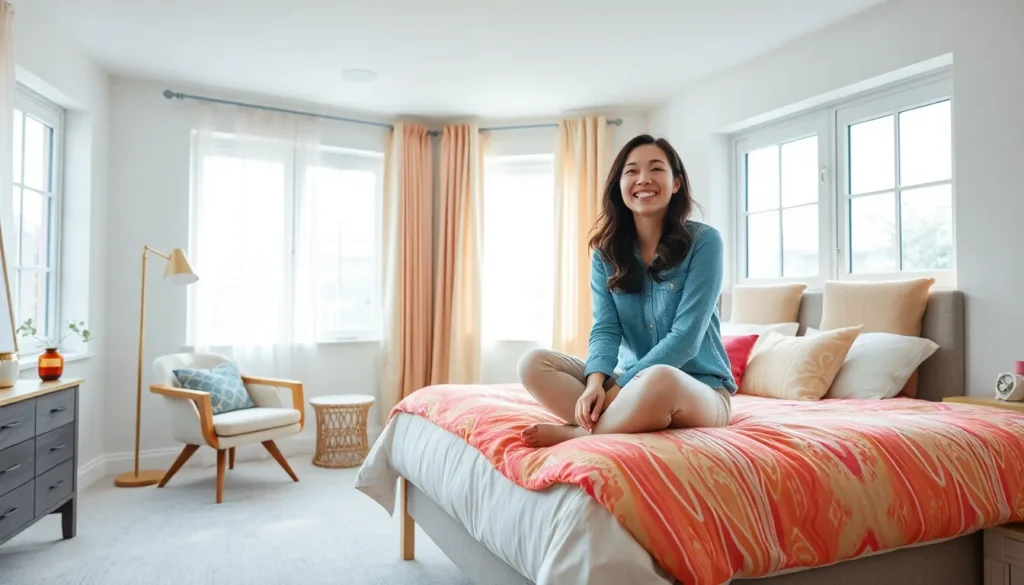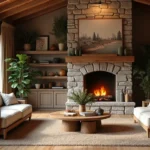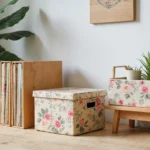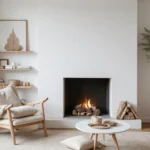We’ve all been there – staring at that unfinished basement wondering how to transform it into something spectacular. Your basement holds incredible potential to become the bedroom of your dreams, whether you’re creating a cozy retreat for guests or carving out a private sanctuary for yourself.
Converting your basement into a bedroom isn’t just about adding a bed and calling it done. We’re talking about smart design strategies that tackle moisture control, maximize natural light, and create a warm atmosphere that rivals any upstairs bedroom. The best part? Basement bedrooms often offer more space and privacy than traditional bedrooms.
From waterproofing essentials to clever lighting tricks, we’ll guide you through every step of creating a basement bedroom that’s both functional and inviting. Get ready to unlock your home’s hidden potential and add serious value to your property.
Transform Your Basement Into a Cozy Bedroom Retreat
Creating a welcoming basement bedroom requires strategic planning and attention to exact environmental challenges. We’ll walk you through the essential steps that turn your underground space into a comfortable sleeping sanctuary.
Start with proper moisture control before any other improvements. Basement bedrooms need dehumidifiers running consistently to maintain humidity levels between 30-50%. We recommend installing a whole-house dehumidifier system that automatically monitors moisture levels and prevents mold growth.
Address lighting deficiencies with layered illumination strategies. Natural light often remains limited in basement spaces, so we suggest combining recessed ceiling fixtures with table lamps and wall sconces. Adding mirrors opposite any existing windows doubles the available natural light reflection throughout the room.
Install adequate ventilation systems to ensure proper air circulation. Basement bedrooms require HVAC extensions or standalone ventilation units that exchange stale air with fresh outdoor air at least six times per hour. We’ve found that ceiling fans paired with ventilation systems create optimal airflow patterns.
Choose appropriate flooring materials that resist moisture and provide warmth underfoot. Luxury vinyl plank flooring, ceramic tiles, or sealed concrete with area rugs offer durability while maintaining comfort. We avoid traditional carpeting in basement bedrooms due to moisture retention issues.
Create separation between sleeping and living areas using room dividers or furniture placement. Open basement layouts benefit from designated zones that define the bedroom space distinctly from recreational or storage areas. We use bookcases, curtains, or decorative screens to establish clear boundaries.
Select basement-appropriate furniture that withstands humidity fluctuations. Metal bed frames resist warping better than solid wood options, while plastic storage containers prevent moisture damage to clothing and linens. We recommend platform beds that allow air circulation underneath the mattress.
Incorporate warming elements that combat the natural coolness of underground spaces. Electric baseboard heaters, space heaters with thermostats, or heated floors create comfortable temperatures year-round. We suggest maintaining bedroom temperatures between 65-70°F for optimal sleep quality.
Maximize Natural Light With Strategic Window Treatments
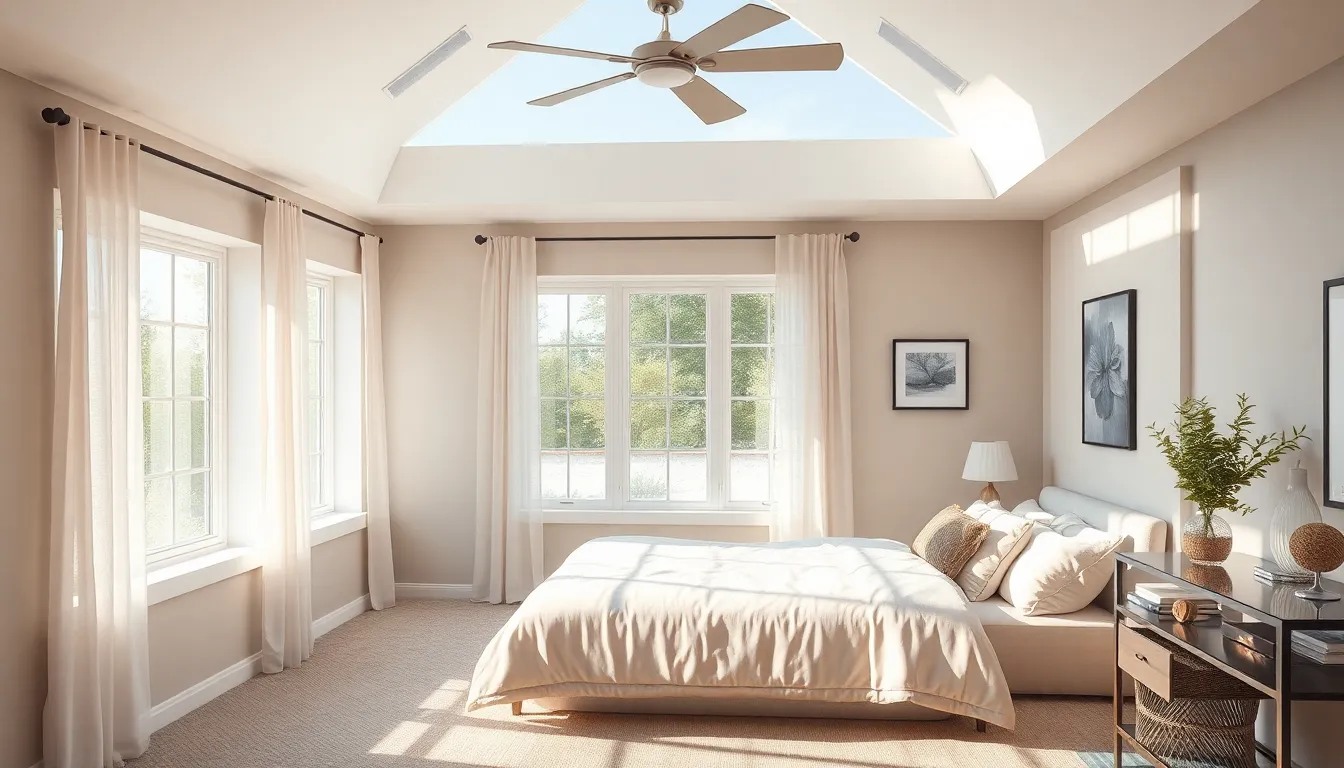
Natural light transforms basement bedrooms from dark spaces into bright, welcoming retreats. We’ll show you how strategic window treatments can dramatically increase daylight while maintaining the privacy and comfort you need.
Install Egress Windows for Safety and Brightness
Egress windows serve dual purposes in basement bedrooms by providing emergency exits and flooding spaces with natural light. These large windows must meet building code requirements, allowing occupants to exit safely and emergency personnel to enter during emergencies. Installing egress windows dramatically increases sunlight entering your basement bedroom, making the room feel more open and inviting.
We recommend measuring your current window openings to determine if egress window installation is feasible. Building codes typically require egress windows to have a minimum opening width of 20 inches and height of 24 inches. Professional installation ensures proper waterproofing and compliance with local safety regulations.
Use Light-Colored Curtains and Blinds
Light-colored window treatments reflect sunlight rather than absorbing it, amplifying natural brightness throughout your basement bedroom. White, cream, and pastel shade curtains work especially well in small or window-limited areas. These colors make basement bedrooms appear more spacious and cheerful by bouncing available light around the room.
We suggest choosing light-filtering or sheer curtains that allow maximum light penetration during daytime hours. Keep window treatments fully open throughout the day to capture every bit of available sunlight. Avoid heavy drapes or dark materials that block precious natural illumination your basement bedroom needs.
Add Window Wells With Reflective Surfaces
Window wells with reflective surfaces bounce daylight back into basement bedrooms, increasing overall illumination significantly. Metal or white-painted concrete surfaces work best for maximizing light reflection. These materials help amplify the natural light entering through basement windows, creating brighter living spaces.
We recommend keeping window wells clean and clear of debris to ensure unobstructed light entry. Regular maintenance prevents leaves, dirt, and snow from blocking precious sunlight. Mirrors placed strategically near windows or wells can further enhance this effect by reflecting and dispersing natural light throughout your basement bedroom.
Create the Illusion of Height With Ceiling Design Tricks
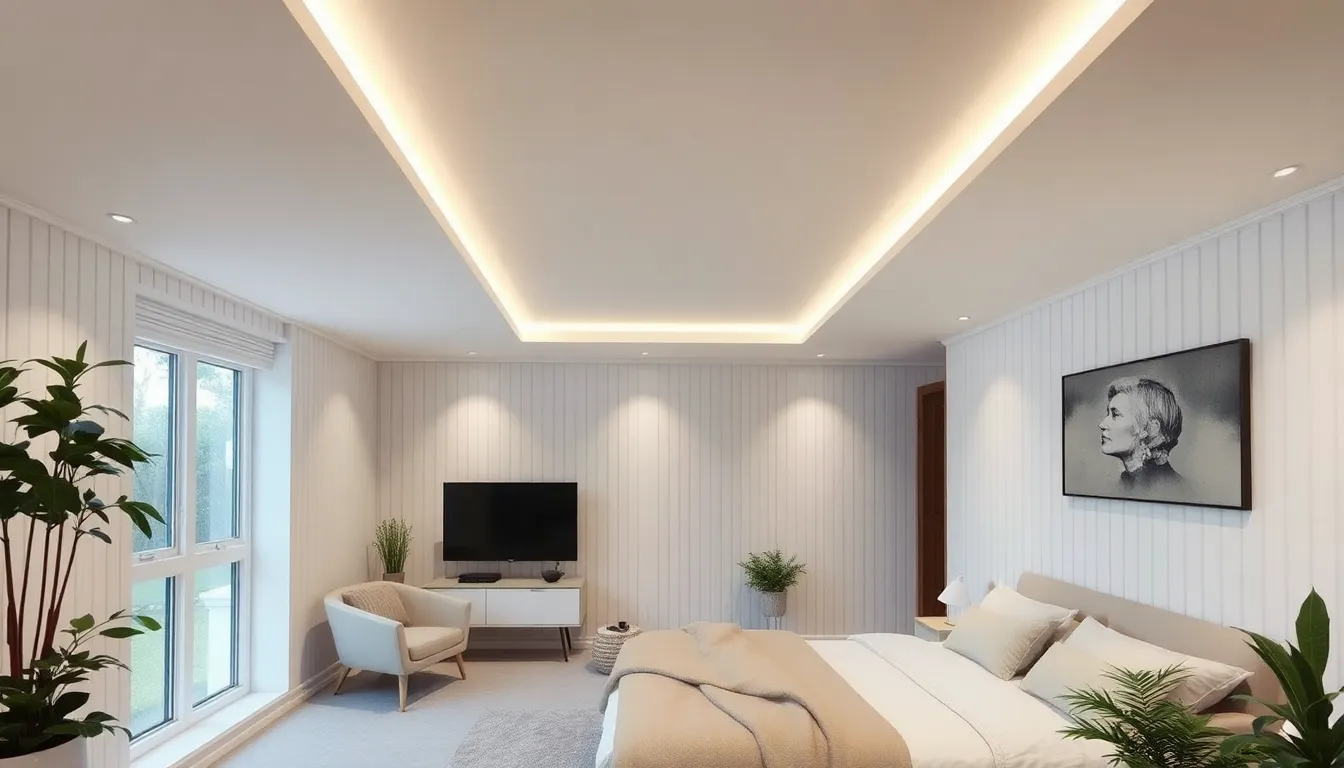
Low ceilings are one of the biggest challenges we face when designing basement bedrooms. Strategic design approaches can transform cramped spaces into airy retreats that feel surprisingly spacious.
Paint Ceilings in Light Colors or White
Light ceiling colors reflect available light and create visual height that dark surfaces absorb. We recommend painting basement bedroom ceilings in crisp white or pale neutral tones to maximize this height improving effect. Bright ceiling paint bounces light throughout the room and makes the space feel more open than darker alternatives.
White ceilings work particularly well in basements because they complement artificial lighting systems we typically rely on in these spaces. Light colored paint also helps unify the room’s design elements while creating a clean backdrop for other decorative features.
Install Recessed Lighting to Avoid Low-Hanging Fixtures
Recessed lighting fixtures sit flush with the ceiling surface and preserve valuable headroom in basement bedrooms. We suggest installing multiple recessed lights throughout the space to create even illumination without sacrificing ceiling height. Low hanging chandeliers and pendant lights make already short ceilings feel even more compressed.
Strategic recessed light placement eliminates shadows that can make basement spaces feel closed in. These fixtures also provide clean lines that support the modern aesthetic many homeowners prefer in basement bedroom conversions. Multiple recessed lights allow us to control brightness levels and create ambient lighting zones throughout the room.
Use Vertical Stripes or Patterns on Walls
Vertical wall patterns draw the eye upward and create the illusion of taller walls in basement bedrooms. We can achieve this effect through striped wallpaper, painted stripes, or vertical wood paneling that emphasizes height rather than width. Bold vertical elements make basement ceilings appear higher by directing visual attention toward the ceiling line.
Narrow vertical stripes work better than wide ones for creating height illusions in compact basement spaces. Botanical accent walls with tall plant motifs or vertical geometric patterns also contribute to this upward visual movement. These design choices help counteract the naturally horizontal emphasis that basement rooms often have due to their below grade positioning.
Control Moisture and Humidity for Comfortable Living
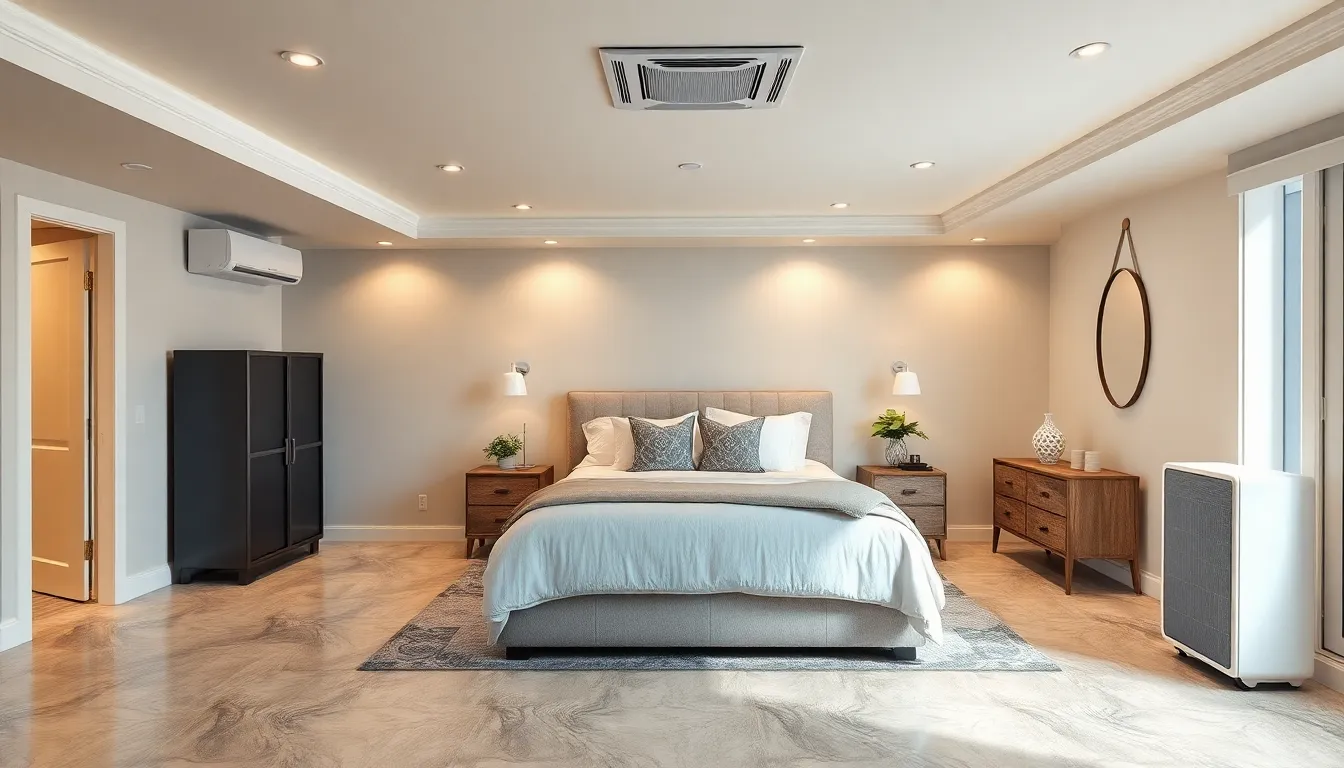
Managing moisture levels forms the foundation of any successful basement bedroom conversion. Without proper humidity control, even the most beautifully designed space can become uncomfortable and potentially harmful to your health.
Install a Dehumidifier System
Installing a dehumidifier system transforms your basement bedroom from a damp, uncomfortable space into a cozy retreat. We recommend investing in high-capacity units like the SaniDry™ XP, which removes up to 10 times more moisture than standard dehumidifiers. These powerful systems maintain optimal humidity levels between 30-50%, preventing mold growth and creating a healthier sleeping environment.
Whole-house dehumidifier systems integrate seamlessly with your existing HVAC setup, providing consistent moisture control throughout the basement. Standard portable units work well for smaller bedrooms, but they require regular emptying and maintenance. Professional-grade dehumidifiers operate more efficiently and require less frequent attention, making them ideal for primary sleeping spaces.
Regular maintenance ensures your dehumidifier system continues operating at peak performance. We suggest cleaning filters monthly and checking drainage systems quarterly to prevent moisture buildup. Most modern units include automatic humidity sensors that adjust operation based on current conditions, providing hands-free moisture management.
Ensure Proper Ventilation With Exhaust Fans
Installing exhaust fans creates essential air circulation that prevents stagnant conditions and reduces humidity buildup. We position these fans strategically near moisture sources or in corners where air tends to collect. Proper ventilation systems remove excess humidity while bringing in fresh air, maintaining balanced indoor conditions.
Air circulation patterns improve dramatically with well-placed exhaust fans that help continuous air movement throughout the bedroom. Fans should operate on timers or humidity sensors to maintain consistent airflow without creating drafts. We recommend installing multiple smaller fans rather than one large unit to ensure even air distribution across the entire space.
Humidity regulation becomes automatic when ventilation systems work in tandem with dehumidifiers. Exhaust fans prevent moisture condensation on walls, windows, and other surfaces by maintaining proper air movement. This combination approach significantly reduces the risk of mold growth and creates a more comfortable sleeping environment.
Use Moisture-Resistant Flooring Materials
Selecting moisture-resistant flooring materials protects your basement bedroom investment from potential water damage. We recommend waterproof options like luxury vinyl plank, ceramic tiles, or specially treated laminate that can withstand humidity fluctuations. These materials resist warping, buckling, and mold growth that commonly affect traditional hardwood or carpet in below-grade spaces.
Waterproof laminate flooring offers the appearance of hardwood while providing superior moisture protection. These products feature sealed edges and waterproof cores that prevent water infiltration even during minor flooding events. Many manufacturers offer warranties specifically covering basement installations, giving you additional peace of mind.
Installing insulation and vapor barriers on walls and floors prevents moisture infiltration before it reaches your flooring materials. We apply vapor barriers directly to foundation walls, then add insulation layers to reduce condensation issues. This approach creates a complete moisture management system that protects both your flooring investment and overall room comfort.
Foundation sealing complements moisture-resistant flooring by preventing water infiltration at the source. Professional waterproofing treatments create barriers that keep groundwater and humidity from entering your basement bedroom. Regular inspections ensure these protective measures continue working effectively over time.
Design a Functional Layout That Maximizes Space

Creating an effective basement bedroom layout requires strategic planning to maximize every square foot while maintaining functionality. We’ll explore how proper furniture placement and smart design choices can transform your basement into a spacious retreat.
Position the Bed Away From Plumbing and Utilities
Locate your bed at least 6 feet away from water heaters, furnaces, and plumbing lines to minimize noise disruptions during sleep. We recommend mapping out all utility locations before finalizing your bedroom layout to identify the quietest zones.
Place the sleeping area in corners furthest from mechanical systems to reduce vibrations and operational sounds. Sound absorbing materials like thick area rugs or acoustic panels can further dampen any residual noise from nearby utilities.
Consider the flow of foot traffic around utility areas when positioning your bed, ensuring maintenance access remains unobstructed while keeping your sleeping space private and peaceful.
Create Distinct Zones for Sleeping and Storage
Design separate areas for sleeping and storage using visual barriers like floor to ceiling curtains or decorative room dividers. Wall mounted drapery systems allow you to create a cozy sleeping cocoon while maintaining the flexibility to open up the space when needed.
Establish a dedicated storage zone using multi tiered shelving units that extend from floor to ceiling, maximizing vertical space without cluttering the bedroom floor. We suggest positioning these storage areas near the basement entrance for easy access to belongings.
Define boundaries between zones using different flooring materials, area rugs, or paint colors to create visual separation without requiring permanent walls or expensive renovations.
Use Multi Purpose Furniture for Small Spaces
Invest in storage beds with built in drawers or hydraulic lift mechanisms that provide hidden compartments beneath the mattress. These beds can store seasonal clothing, extra bedding, or personal items while keeping the bedroom floor clear and spacious.
Choose furniture pieces that serve multiple functions, such as ottomans with interior storage compartments, desks with built in filing systems, or nightstands with multiple drawers and shelving. We recommend measuring your basement dimensions carefully before purchasing to ensure optimal fit.
Select pieces with legs or raised bases to create visual lightness and allow for easier cleaning underneath, making your basement bedroom feel less cramped and more airy than traditional ground sitting furniture.
Choose the Right Flooring for Basement Conditions
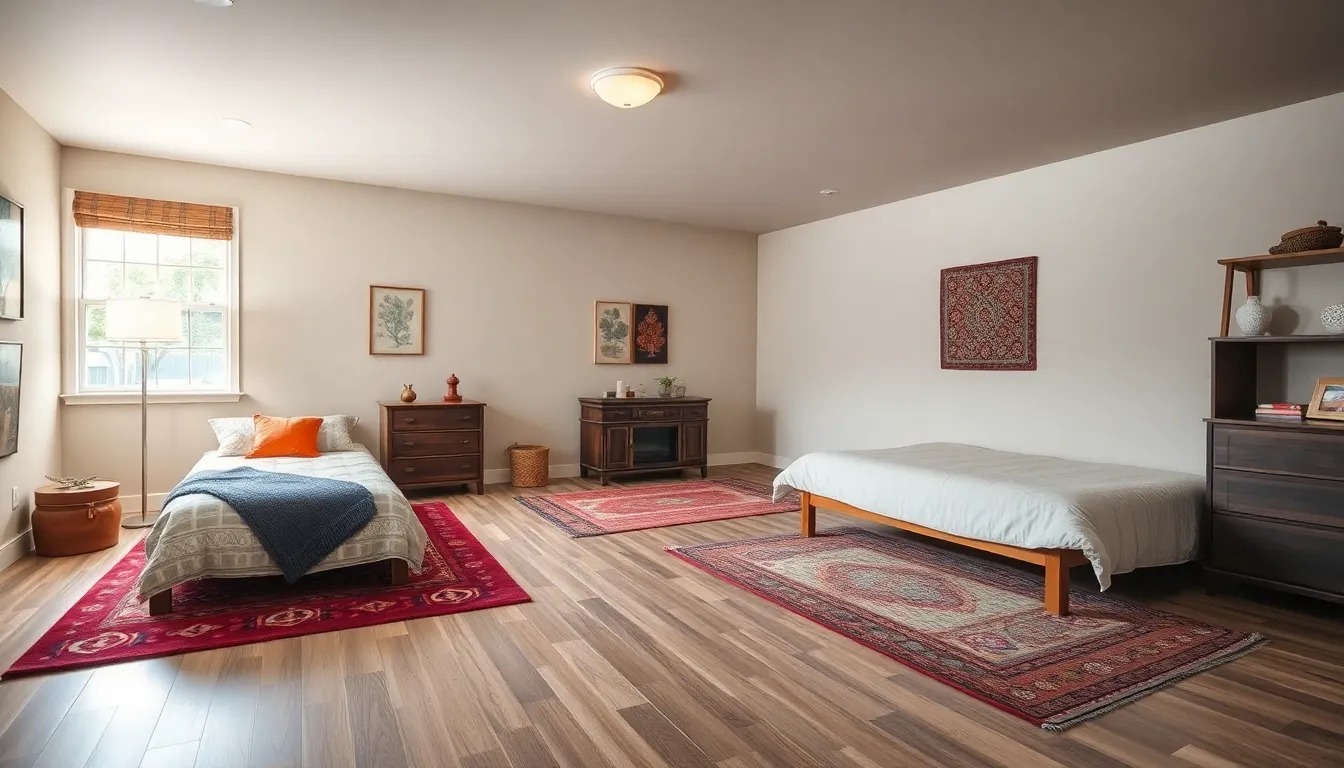
Selecting appropriate flooring materials becomes crucial when moisture and temperature fluctuations threaten your basement bedroom’s longevity. We must prioritize materials that resist mold, mildew, and dampness to maintain both structural integrity and indoor air quality.
Install Luxury Vinyl Plank for Durability
Luxury vinyl plank stands out as our top recommendation for basement bedrooms due to its exceptional water resistance and realistic appearance. We’ve found that LVP provides an effective moisture barrier while mimicking the look of natural wood or stone. Installation proves straightforward for most homeowners, requiring minimal preparation on concrete subfloors.
Maintenance requirements remain minimal with luxury vinyl planks, making them ideal for busy households. We appreciate how these floors withstand humidity changes without warping or buckling. Durability extends beyond moisture resistance, as LVP handles foot traffic and furniture movement without showing important wear patterns. Temperature fluctuations that commonly affect basement spaces won’t compromise the material’s integrity over time.
Consider Carpet Tiles for Warmth and Comfort
Carpet tiles offer modular flexibility that traditional wall-to-wall carpeting cannot match in basement environments. We recommend selecting tiles with moisture-resistant backings specifically designed for below-grade installations. Comfort underfoot becomes immediately noticeable, providing warmth that concrete floors lack during colder months.
Installation becomes manageable when you can replace individual damaged sections rather than entire carpeted areas. We’ve seen homeowners successfully customize patterns and colors by mixing different tile styles. Styles range from commercial-grade options to residential designs that mimic traditional carpeting. Colors can be coordinated with existing décor or used to create visual interest through geometric patterns.
Use Area Rugs Over Concrete Floors
Area rugs provide design flexibility when layered over unfinished or polished concrete basement floors. We suggest choosing rugs that can be easily removed for cleaning or if moisture issues develop. Visual appeal increases dramatically when strategic rug placement defines sleeping and sitting areas within the bedroom space.
Flexibility extends to seasonal changes as different rugs can transform the room’s atmosphere throughout the year. We recommend avoiding permanent adhesive installations that might trap moisture underneath. Warmth becomes immediately apparent when bare feet contact soft rug fibers instead of cold concrete surfaces. Easy removal allows for quick cleaning or replacement if water damage occurs during heavy rainfall or plumbing incidents.
Add Warmth and Personality With Strategic Lighting
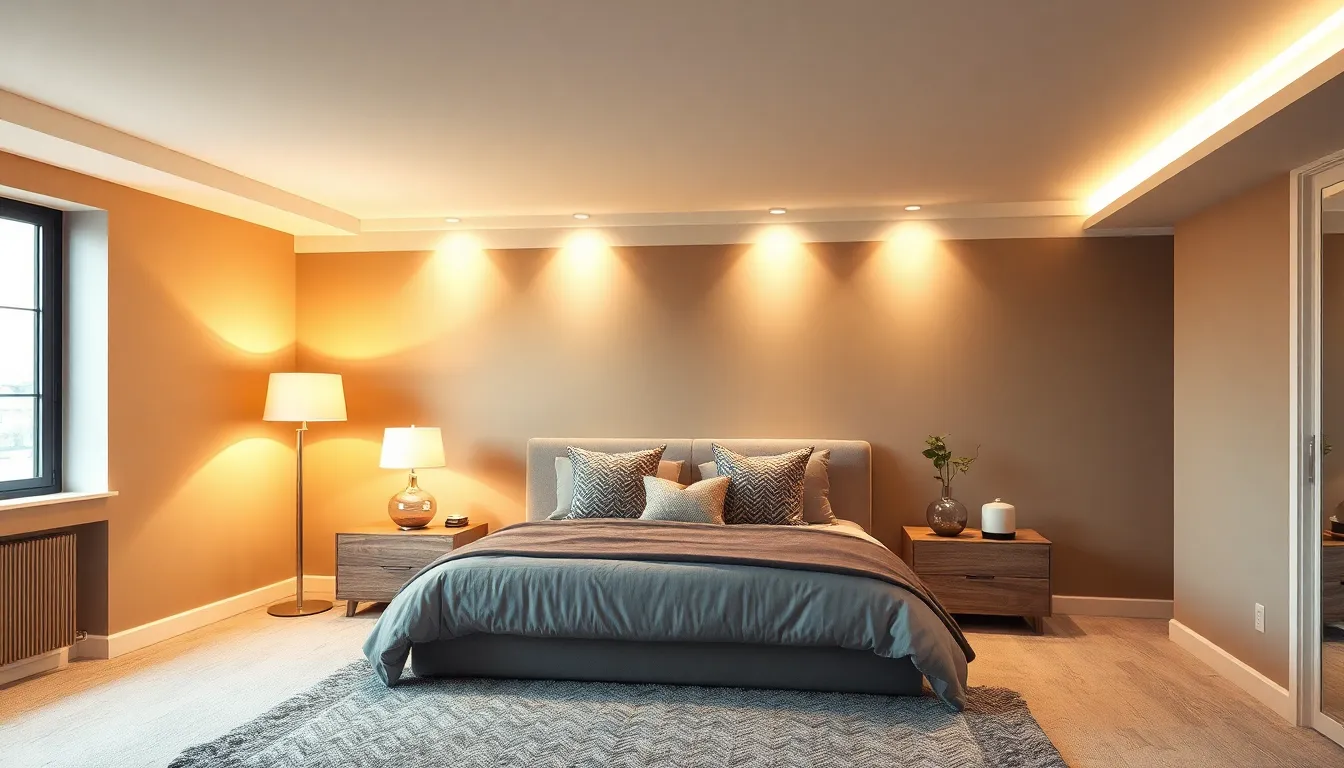
Strategic lighting transforms your basement bedroom from a cold, dungeon-like space into a warm and inviting retreat. We’ll show you how layered lighting approaches create depth and coziness while balancing functionality with ambiance.
Layer Different Types of Lighting Sources
Recessed lighting provides the foundation for your basement bedroom illumination by delivering even, shadow-free light without consuming precious ceiling space. Position these fixtures in a grid pattern throughout the room to ensure uniform brightness across all areas.
Track lighting adds incredible flexibility to your lighting design by allowing you to direct light onto exact areas like artwork, reading nooks, or seating areas. This type of lighting personalizes your room’s atmosphere and helps create distinct zones within the space.
Combining both recessed and track lighting creates a comprehensive ambient lighting system that eliminates dark corners while providing targeted illumination where you need it most. This dual approach ensures your basement bedroom feels bright and welcoming throughout the day.
Install Table Lamps and Floor Lamps for Ambiance
Table lamps bring softness and warmth to your basement bedroom, making the space feel more homey and less institutional. These fixtures provide essential task lighting for activities like reading or relaxing while adding decorative elements to your room design.
Floor lamps create cozy lighting pools that transform harsh basement lighting into something more intimate and inviting. Choose lamps with warm bulbs between 2700K to 3000K to enhance the cozy effect and create a bedroom atmosphere that rivals any upstairs space.
Placing these lamps strategically around the room allows you to create multiple lighting zones, giving you control over the ambiance throughout different times of day. This flexibility helps your basement bedroom adapt to various activities and moods.
Use LED Strip Lights for Accent Lighting
LED strip lights offer modern flair while highlighting architectural details, textures, and colors throughout your basement bedroom. Install these versatile lights under shelves, behind headboards, or along crown molding to create subtle accent lighting that adds depth and visual interest.
Behind the headboard placement creates a stunning focal point while providing gentle backlighting for evening activities like reading or watching TV. This positioning adds sophistication to your basement bedroom while maintaining functionality.
Under shelf installation showcases your personal belongings and creates floating effects that make built-in storage appear more elegant and purposeful. These accent lights can also highlight the texture of exposed brick walls or other architectural features that make your basement bedroom unique.
Incorporate Smart Storage Solutions for Organization
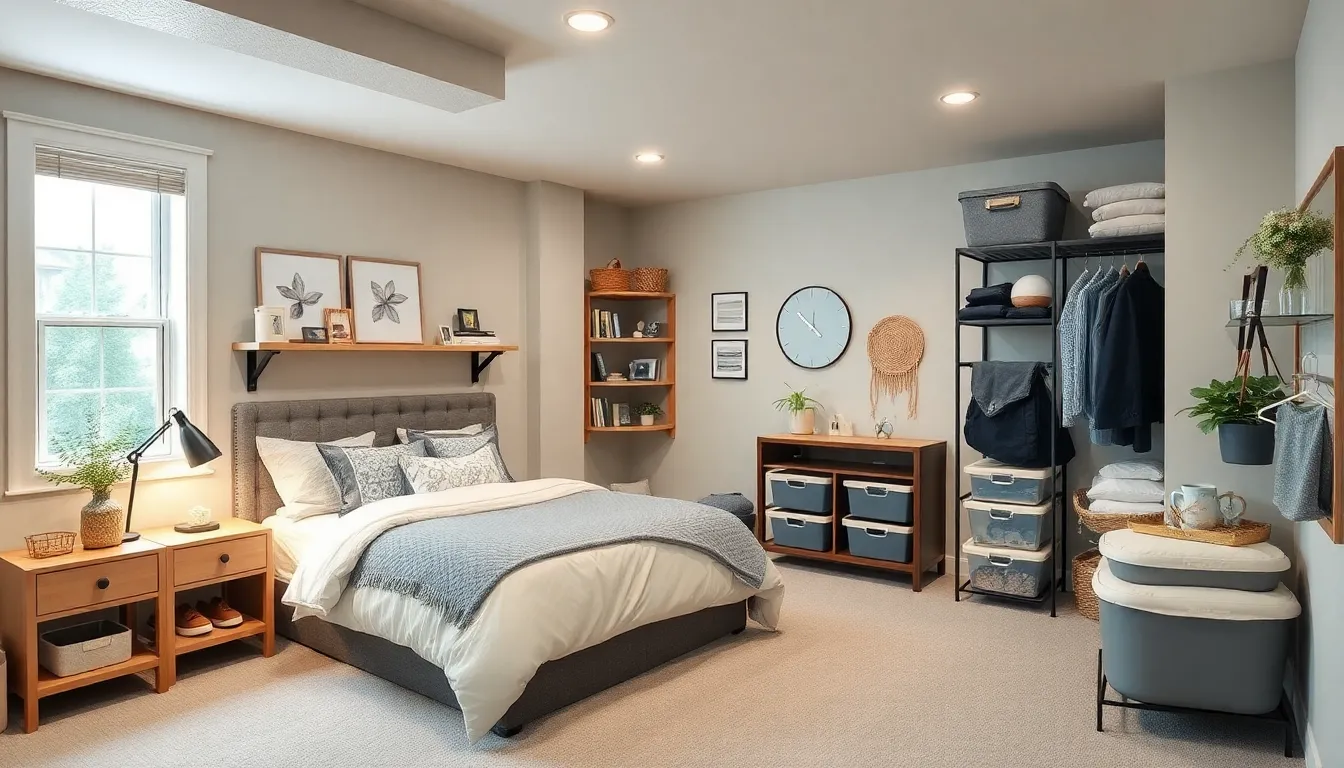
Smart storage transforms cluttered basement bedrooms into organized retreats that maximize every square foot. We’ll explore strategic answers that work around basement constraints while maintaining the cozy atmosphere we’ve been building.
Build Custom Shelving Around Structural Elements
Custom shelving turns basement obstacles into organizational opportunities by working with existing structural features. Support beams become the backbone for built-in storage units that blend seamlessly with your bedroom design. Adjustable shelving systems adapt to irregular ceiling heights and ductwork while maximizing vertical space that might otherwise go unused.
Modular shelving units offer flexibility when dealing with challenging basement layouts. We recommend installing wall-mounted brackets that work around pipes and electrical components without compromising structural integrity. Built-in shelves can wrap around support columns to create reading nooks or display areas for personal items.
Planning your shelving around HVAC systems ensures proper air circulation while creating functional storage zones. Corner units maximize awkward spaces where walls meet structural elements, turning dead zones into valuable organizational real estate.
Use Under-Bed Storage Containers
Under-bed storage maximizes floor space in basement bedrooms while keeping essentials within easy reach. Rolling storage bins work perfectly in spaces with lower ceilings, allowing you to access seasonal clothing and extra bedding without crawling or straining. Flat containers slide effortlessly beneath bed frames, making organization simple and accessible.
Built-in drawers beneath platform beds create permanent storage answers that handle humidity fluctuations better than cardboard boxes. We suggest choosing moisture-resistant containers made from plastic or treated wood to protect your belongings from basement conditions. Clear storage bins help you identify contents quickly without rummaging through multiple containers.
Vacuum-sealed bags compress bulky items like winter coats and comforters, fitting more items in limited under-bed space. Divider systems within larger containers keep smaller items organized and prevent everything from shifting around when you pull bins out.
Install Wall-Mounted Organizers and Hooks
Wall-mounted organizers free up precious floor space while keeping daily essentials visible and accessible. Pegboards offer customizable storage answers that adapt to changing needs with various hooks, baskets, and shelves. Strategic hook placement near the entrance keeps jackets, bags, and keys organized without cluttering surfaces.
Floating shelves display decorative items while providing practical storage for books, electronics, and personal belongings. We recommend installing hooks at different heights to accommodate various family members and clothing types. Command strips work well for lightweight items and won’t damage basement walls when you need to make changes.
Towel bars and robe hooks near the bedroom entrance create a mini mudroom area for transitioning between upstairs and your basement retreat. Wall-mounted charging stations keep devices organized while maintaining the clean aesthetic we’ve established through proper lighting and moisture control.
Select Colors and Decor That Brighten the Space
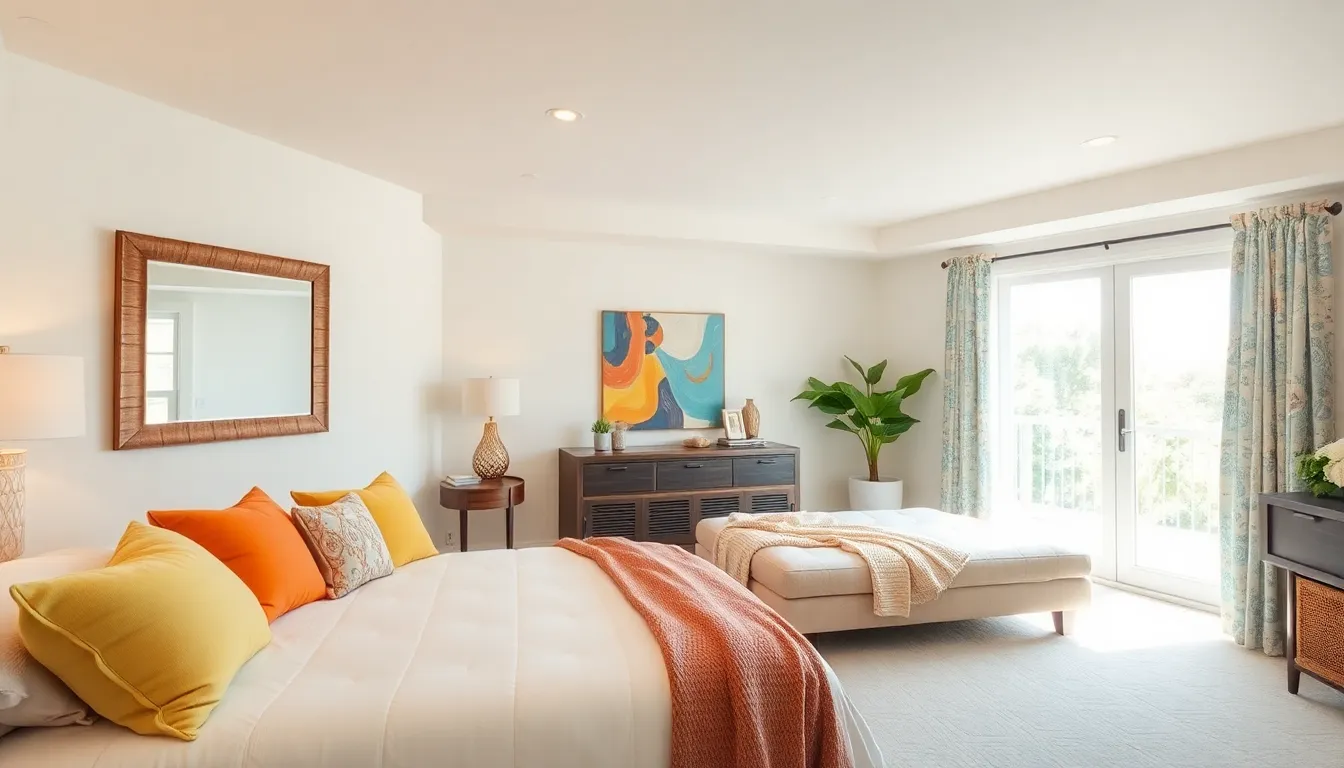
Building on our lighting and storage strategies, we’ll now explore how strategic color choices and decor selections can dramatically transform your basement bedroom’s atmosphere. The right palette and decorative elements will amplify all the brightness we’ve created while making the space feel larger and more inviting.
Use Light and Neutral Color Palettes
Light colors serve as your foundation for creating a bright, airy basement bedroom that feels surprisingly spacious. We recommend painting walls in whites, creams, or soft pastels that reflect available light and enhance the room’s overall brightness. These neutral shades make the space feel larger while providing a clean backdrop for your decor.
Soft grays work particularly well in basement bedrooms because they add sophistication without sacrificing brightness. You can layer different tones of the same neutral color to create visual interest while maintaining that open, airy feeling. Consider using slightly warmer neutrals like cream or ivory on walls that receive less natural light to prevent the space from feeling cold.
The ceiling deserves special attention in your color scheme since light colored ceilings reflect illumination back into the room. We suggest using pure white or the lightest shade of your wall color to maximize this effect. This technique complements the recessed lighting we discussed earlier while creating the illusion of higher ceilings.
Add Colorful Accents Through Textiles and Art
Vibrant accents bring personality and warmth to your neutral foundation without overwhelming the brightening effect we’ve achieved. We recommend incorporating colorful throw pillows, blankets, and area rugs that can easily be changed with seasons or style preferences. These textile elements add visual interest while maintaining the room’s bright, open atmosphere.
Artwork provides another excellent opportunity to introduce color without permanent commitment to bold choices. Consider hanging pieces with bright blues, warm yellows, or energetic greens that complement your neutral walls. Photography or prints featuring natural landscapes can also help counteract the underground feeling common in basement spaces.
Window treatments offer both function and style when selecting accent colors for your basement bedroom. We suggest choosing curtains or blinds in colors that enhance rather than block natural light. Light colored fabrics with subtle patterns can add visual texture while maintaining the bright atmosphere you’ve worked to create.
Incorporate Mirrors to Reflect Light and Create Depth
Mirrors multiply the impact of every light source in your basement bedroom while creating the illusion of expanded space. We recommend hanging large mirrors on walls opposite windows or light fixtures to maximize light reflection throughout the room. This strategy amplifies both natural and artificial illumination we’ve carefully planned.
Strategic mirror placement can transform the perception of your basement’s dimensions entirely. Position mirrors to capture and reflect the brightest areas of your room, such as near your layered lighting setup or close to egress windows. The reflected light will bounce around the space, eliminating dark corners and creating a brighter overall environment.
Multiple mirrors of varying sizes create depth and visual interest while serving the practical purpose of light amplification. We suggest using a combination of full length mirrors, decorative wall mirrors, and even mirrored furniture pieces to maximize this brightening effect. These reflective surfaces work together with your light color palette to create a basement bedroom that feels surprisingly bright and spacious.
Ensure Proper Insulation and Temperature Control
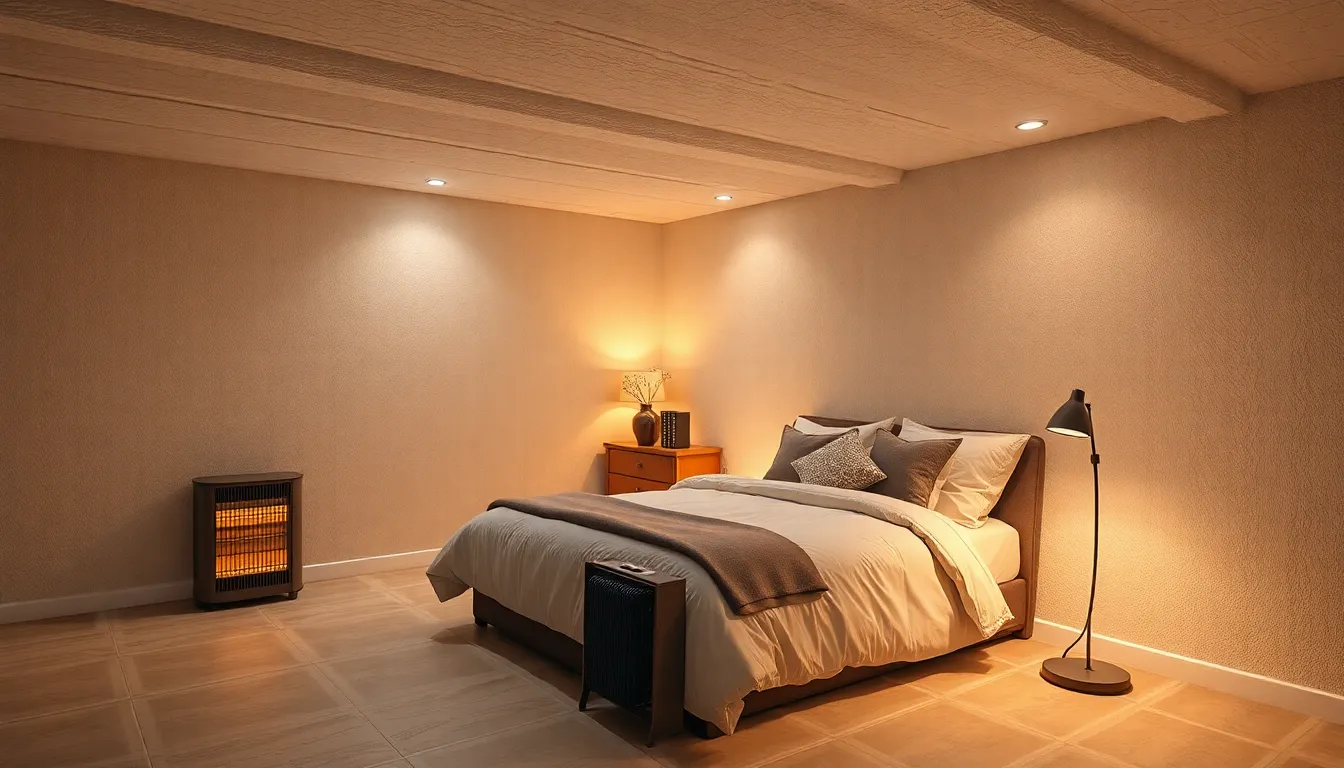
Building on our foundation of moisture control and lighting strategies, we’ll now tackle the critical aspect of maintaining comfortable temperatures year-round in your basement bedroom.
Insulate Walls and Ceilings for Energy Efficiency
Walls require moisture-resistant insulation materials to prevent heat loss and combat humidity issues. Closed-cell spray foam insulation provides superior thermal performance while resisting water infiltration, making it our top recommendation for basement walls. Rigid foam board insulation offers another effective option that creates a reliable thermal barrier.
Ceilings benefit from fiberglass batt or blown-in insulation to reduce heat transfer from upper floors and minimize noise transmission. We recommend concealing exposed pipes, ducts, and HVAC equipment during this process to achieve a finished appearance. Proper ceiling insulation significantly reduces energy costs while creating a quieter sleep environment.
Floors need attention when concrete surfaces feel cold underfoot. Installing subfloor panels over concrete improves both comfort and insulation value. These panels create an air gap that prevents direct contact with cold concrete while providing a warmer surface for your feet.
Install a Separate HVAC Zone for Climate Control
Dedicated HVAC zones allow precise temperature control without affecting the rest of your home’s climate. Installing a separate zone specifically for your basement bedroom ensures optimal comfort while maintaining energy efficiency throughout your house.
Professional ductwork modification ensures proper airflow and system efficiency. We recommend working with HVAC specialists to determine correct duct sizing and layout for your basement’s unique requirements. Proper installation prevents temperature fluctuations and reduces strain on your main heating and cooling system.
Zone control systems provide year-round comfort by automatically adjusting temperatures based on your preferences. These systems typically include separate thermostats and dampers that regulate airflow to your basement bedroom independently.
Use Space Heaters or Electric Baseboard Heating
Supplemental heating options provide additional warmth during winter months when your main HVAC system needs support. Space heaters with automatic shut-off features offer portable warmth while maintaining safety standards. Electric baseboard heaters provide consistent, distributed heat along perimeter walls.
Safety precautions prevent fire hazards when using supplemental heating equipment. We always recommend choosing units with tip-over protection, overheat shutoffs, and proper electrical requirements. Following manufacturer guidelines ensures safe operation while maximizing heating efficiency.
Strategic placement maximizes heating effectiveness in your basement bedroom. Position space heaters away from bedding, curtains, and other flammable materials while ensuring adequate clearance around the unit. Electric baseboard heaters work best when installed along exterior walls where heat loss typically occurs.
Conclusion
Transforming your basement into a stunning bedroom retreat doesn’t have to feel overwhelming. With the right approach to moisture control lighting answers and temperature management you’ll create a space that rivals any upstairs bedroom.
Remember that success lies in the details – from choosing moisture-resistant materials to implementing proper ventilation systems. Each element we’ve covered works together to ensure your basement bedroom remains comfortable healthy and inviting year-round.
Your basement holds incredible potential waiting to be unlocked. By following these proven strategies you’re not just gaining extra living space – you’re adding important value to your home while creating the perfect private sanctuary for family members or guests.
Frequently Asked Questions
Can I really turn my basement into a bedroom?
Yes, you can transform your basement into a functional bedroom with proper planning. The key is addressing moisture control, lighting, ventilation, and insulation. You’ll need to ensure the space meets local building codes, install proper waterproofing, and create adequate lighting and climate control systems to make it comfortable and livable.
What’s the most important thing to consider when converting a basement to a bedroom?
Moisture control is the most critical factor. Install a whole-house dehumidifier system to maintain humidity levels between 30-50% and prevent mold growth. Proper waterproofing, moisture-resistant materials, and adequate ventilation are essential to create a healthy living environment that won’t develop moisture problems over time.
How do I make a basement bedroom brighter?
Use layered lighting strategies combining recessed ceiling fixtures, table lamps, and floor lighting. Install egress windows for natural light and safety. Add mirrors to reflect light, use light-colored paint on walls and ceilings, and choose light-colored window treatments. Keep window wells clean and consider adding reflective surfaces to amplify natural light.
What type of flooring is best for a basement bedroom?
Choose moisture-resistant flooring materials like luxury vinyl plank, waterproof laminate, or ceramic tiles. These materials can withstand humidity fluctuations and potential moisture issues. Avoid carpet or hardwood, which can absorb moisture and develop mold. Consider installing subfloor panels over concrete for added comfort and insulation.
Do I need special ventilation for a basement bedroom?
Yes, proper ventilation is crucial. Extend your HVAC system to include the basement or install standalone ventilation units. Add strategically placed exhaust fans to ensure air circulation and reduce humidity buildup. Good ventilation prevents stuffiness, controls moisture, and maintains healthy air quality in the underground space.
How can I make low basement ceilings feel higher?
Paint ceilings white or light colors to reflect light and create spaciousness. Use recessed lighting instead of hanging fixtures. Install vertical stripes or patterns on walls to draw the eye upward. Choose low-profile furniture and avoid clutter. These design tricks create the illusion of height in cramped spaces.
What heating options work best for basement bedrooms?
Install a separate HVAC zone for precise temperature control, or use supplemental heating like electric baseboard heaters or safe space heaters. Proper insulation with closed-cell spray foam or rigid foam board helps retain heat. Always follow safety precautions when using space heaters and ensure adequate ventilation.
Are there building code requirements for basement bedrooms?
Yes, most building codes require egress windows for basement bedrooms as emergency exits. The windows must meet specific size requirements and be easily accessible. Check with your local building department for specific codes in your area, as requirements vary by location. Proper permits may be needed for conversion work.

